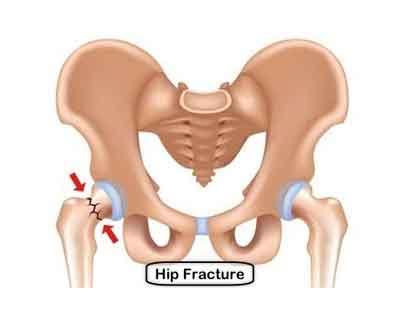- Home
- Editorial
- News
- Practice Guidelines
- Anesthesiology Guidelines
- Cancer Guidelines
- Cardiac Sciences Guidelines
- Critical Care Guidelines
- Dentistry Guidelines
- Dermatology Guidelines
- Diabetes and Endo Guidelines
- Diagnostics Guidelines
- ENT Guidelines
- Featured Practice Guidelines
- Gastroenterology Guidelines
- Geriatrics Guidelines
- Medicine Guidelines
- Nephrology Guidelines
- Neurosciences Guidelines
- Obs and Gynae Guidelines
- Ophthalmology Guidelines
- Orthopaedics Guidelines
- Paediatrics Guidelines
- Psychiatry Guidelines
- Pulmonology Guidelines
- Radiology Guidelines
- Surgery Guidelines
- Urology Guidelines
Fracture in older people increases mortality risk up to 10 years

Broken bones among older people increase their risk of death for up to 10 years, according to a new study published in the Endocrine Society's Journal of Clinical Endocrinology & Metabolism.
Older people with broken bones face a higher risk of death, and that risk can stay elevated for years. Hip fractures are known to increase the mortality risk among older people, and this is the first study to identify how long this risk lasts for different fractures. Non-hip fractures contribute to more than two-thirds of all fragility fractures and can include fractures of the femur, pelvis, clavicle or lower leg.
"A fracture is the starting point for much wider health issues that persist long after the fracture has healed and can ultimately result in earlier death," said Jacqueline Center, M.B.B.S., Ph.D., of the Garvan Institute of Medical Research in Sydney, Australia. "We tracked the increased risk of death for fractures in different bones and found that they vary. The heightened risk can last for over a decade after a hip fracture, and for most other fractures (apart from distal or minor fractures), the increased risk is for about five years."
This nationwide, registry-based follow-up study included all individuals in Denmark over the age of 50 who first experienced fragility fractures in 2001 and were followed up to 10 years for their mortality risk.
In the year after breaking a hip, men faced a 33 percent higher risk of death and women had a 20 percent higher risk. For femur or pelvic fractures, the one-year excess mortality was between 20 percent and 25 percent. A significant risk of death was still observed 10 years after a person broke a hip and approximately five years following non-hip fractures.
"Our findings emphasize just how crucial early intervention is," Center said. "We need to understand the risk of breaking a bone before the fracture happens and treat that individual accordingly. While intervention after the first fracture is critical, we also need to diagnose those at risk of breaking bones before these major health impacts have occurred."
For more details click on the link: https://doi.org/10.1210/jc.2017-02656

Disclaimer: This site is primarily intended for healthcare professionals. Any content/information on this website does not replace the advice of medical and/or health professionals and should not be construed as medical/diagnostic advice/endorsement or prescription. Use of this site is subject to our terms of use, privacy policy, advertisement policy. © 2020 Minerva Medical Treatment Pvt Ltd